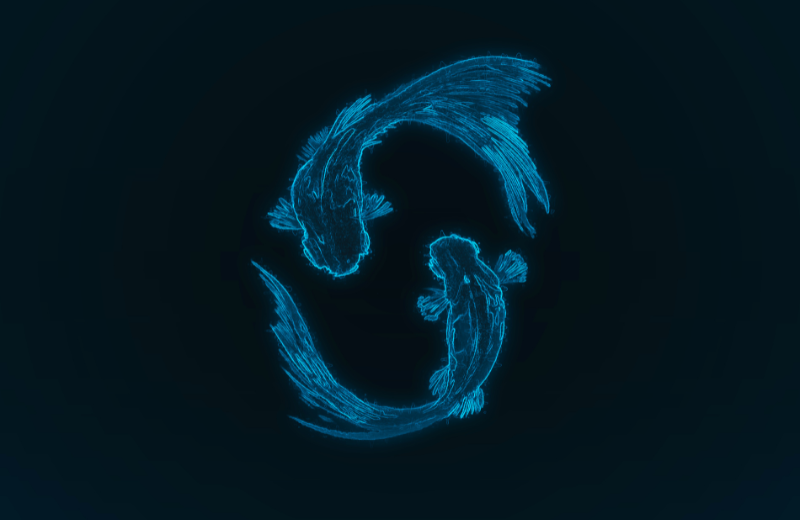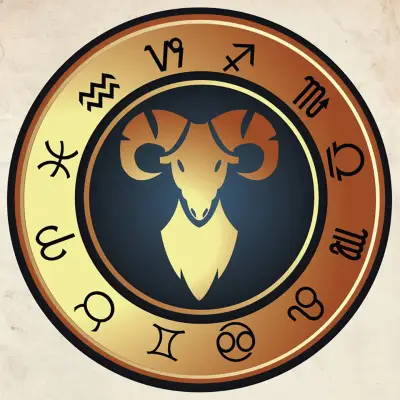Pisces is a constellation that often catches the eye. Whether you’re a casual stargazer, an astrology enthusiast, or simply curious, learning about the Pisces constellation can be fascinating and enriching.
Jump to:
What is the Pisces Constellation?
Pisces, Latin for "the fish," is a constellation rich in history and mythology. It is located in the Northern Hemisphere and can be best observed during autumn evenings. The constellation is special for many reasons, including its unique shape and its place in both Greek mythology and modern astronomy.
Pisces is one of the twelve constellations of the zodiac. It is represented by two fish swimming in opposite directions, connected by a cord. This distinct imagery makes Pisces easy to recognise in the sky, especially if you know where to look.
Recommended for you!
Best SellersWhat is the Myth Behind the Pisces?
The story of Pisces dates back to ancient Greek mythology. According to legend, Pisces represents the fish into which Aphrodite, the goddess of love, and her son Eros transformed to escape the monstrous Typhon. To avoid capture, they tied themselves together with a rope and swam away, a tale that explains the constellation’s depiction of two fish connected by a cord.
This myth highlights the themes of love, protection, and transformation, which are often associated with the constellation. It’s a compelling story that adds a layer of enchantment to the celestial pattern.
What Mythical Creature Protects Pisces?
The mythical creature most closely associated with protecting Pisces is the fish itself, specifically the two fish that represent Aphrodite and Eros. In some variations of the myth, these fish were sent by Poseidon, the god of the sea, to protect them from Typhon.
Who is the Goddess of Pisces?
The goddess associated with Pisces is Aphrodite, known in Roman mythology as Venus. As mentioned in the myth, Aphrodite transformed into a fish to escape Typhon. This connection ties the constellation to themes of love, beauty, and protection, all qualities attributed to Aphrodite.

Stars in Pisces Constellation
The Pisces constellation is home to several notable stars. While it might not be the brightest constellation in the sky, it has its own charm and significance.
Alrescha (Alpha Piscium)
Alrescha is the brightest star in the Pisces constellation, although it is not as luminous as some other stars in the sky. Its name comes from the Arabic word for "the cord," reflecting the mythological story of the two fish tied together. Alrescha is a binary star system, which means it consists of two stars orbiting each other.
Fumalsamakah (Beta Piscium)
Fumalsamakah is another prominent star in Pisces. Its name means "the fish's mouth" in Arabic, and it is slightly dimmer than Alrescha. This star is also a part of the celestial fish imagery that characterises the constellation.
Van Maanen's Star
While not as visually striking, Van Maanen's Star is an interesting part of the Pisces constellation. It is a white dwarf, one of the closest stars to our solar system. Its discovery has provided valuable insights into the lifecycle of stars.
Pisces Constellation Viewing Tips
What Do Pisces Look Like in the Sky?
When observing Pisces, you’ll see a collection of stars that form a faint V-shape. The constellation stretches over a large area of the sky, and its stars are not particularly bright, which can make it challenging to spot without a clear, dark sky.
Look for two groups of stars connected by a line – this represents the cord tying the two fish together. Finding the Great Square of Pegasus, a nearby constellation, can help locate Pisces, as Pisces lies just to the west of Pegasus.
Where is Pisces in the Sky?
Pisces is located in the Northern Hemisphere's celestial sphere. It lies between Aquarius to the west and Aries to the east. The best time to observe Pisces is during the autumn months, specifically from September to November.
To find Pisces, start by locating the Great Square of Pegasus. From there, look slightly to the west to spot the faint stars that make up the V-shape of Pisces. Using a star map or an astronomy app can also help in identifying the constellation.

What Time of Year can I Best See the Pisces Constellation?
The best time to see the Pisces constellation is during the autumn months, specifically from September to November. During these months, Pisces is positioned prominently in the night sky in the Northern Hemisphere, making it easier to observe.
What tools can help me find Pisces in the night sky?
To locate Pisces in the night sky, you can use several tools and resources. A star map or a smartphone app like Star Walk or SkyView can help you pinpoint the constellation. Additionally, using a telescope or binoculars can enhance your viewing experience, allowing you to see the finer details of the stars and deep-sky objects within Pisces.
What are Three Interesting Facts About Pisces Constellation?
Ancient Origins
Pisces is one of the oldest known constellations, with its roots in Babylonian astronomy. It has been recognised and depicted for thousands of years, showcasing humanity's long-standing fascination with the stars.
Zodiac Sign
Astronomical Significance
Despite its relatively dim stars, Pisces plays a key role in the sky. It is located in a region known as the "Sea" or "Water," along with other water-related constellations like Aquarius and Cetus. This grouping reflects the ancient understanding and naming of the constellations based on their patterns and stories.
Want to put your knowledge of Astrology to the test?
Centre of Excellence has you covered.
Sample the first 2 modules of our Astrology Diploma Course for FREE!
Frequently Asked Questions About the Pisces Constellation
How far away are the stars in the Pisces constellation?
The stars in the Pisces constellation are at varying distances from Earth. For instance, Alrescha (Alpha Piscium) is approximately 139 light-years away. The distance of other stars can range from a few dozen to several hundred light-years away.

How large is the Pisces constellation?
Pisces is a relatively large constellation, covering an area of 889 square degrees. It is the 14th largest constellation in the night sky, making it a significant feature among the zodiac constellations.
Are there any meteor showers associated with Pisces?
The Piscid meteor showers are associated with the Pisces constellation. The Piscids occur between September 1 and September 30, with a peak around mid-September. These meteor showers are generally faint, but they can still provide an interesting celestial display.
Can Pisces be seen from the Southern Hemisphere?
While Pisces is primarily visible in the Northern Hemisphere, it can also be observed from certain parts of the Southern Hemisphere. However, it appears lower in the sky and is best viewed during the spring months in the Southern Hemisphere.
Does Pisces contain any notable deep-sky objects?
The Pisces constellation contains several notable deep-sky objects, including galaxies and clusters. One prominent example is the Pisces Dwarf Galaxy, which is part of the Local Group of galaxies. Additionally, the constellation contains Messier 74, a spiral galaxy known for its well-defined structure.
Is there a planetary system in the Pisces constellation?
Several stars in the Pisces constellation have been found to host planetary systems. For example, HD 217107 is a star in Pisces that has two known exoplanets. These discoveries contribute to the ongoing research into the potential for life beyond our solar system.
How did the Pisces constellation get its name?
The name "Pisces" is derived from the Latin word for "fish." The constellation's name and shape are based on the Greek myth of Aphrodite and Eros transforming into fish to escape the monster Typhon. The imagery of two fish tied together by a cord has been passed down through various cultures and languages.
Is Pisces a Galaxy?
Pisces is not a galaxy; it is a constellation, a group of stars forming a recognisable pattern. However, within the Pisces constellation, there are several galaxies. The most notable is the Pisces Dwarf Galaxy, which is a member of our Local Group of galaxies.
Recommended for you!
Best SellersStudy Astronomy for £29
If you’re inspired to learn more about the wonders of the cosmos, consider exploring the Astronomy Diploma Course offered by Centre of Excellence. This fascinating course covers everything from basic star gazing to the complexities of celestial navigation. As a special offer, you can enrol for a discounted price of £29.













